Filter by
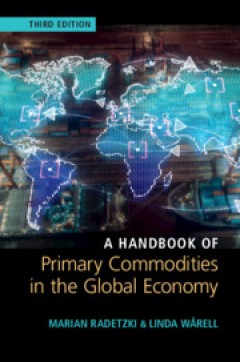
A Handbook of Primary Commodities in the Global Economy
The dramatic price falls of 2014–2015 marked the end of the most powerful and enduring commodity boom since the Second World War. Now in its third edition, this book acts as a guide to the ins and outs of the primary commodity universe. Updates to this edition reflect on the consequences of both China's economic slowdown as its industrialization enters a new, less commodity demanding phase, a…
- Edition
- -
- ISBN/ISSN
- 9781108886529
- Collation
- -
- Series Title
- -
- Call Number
- -
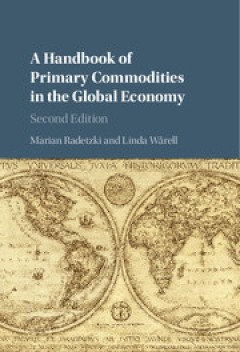
A Handbook of Primary Commodities in the Global Economy
The 2010s have been a dramatic period for most primary commodity markets. Producers suffered heavily as prices fell in response to new supply facilities going into production, juxtaposed against disappointing demand evolution from China in particular, marking the end of the most powerful and enduring commodity boom since the Second World War. This book is a guide to the primary commodity univer…
- Edition
- -
- ISBN/ISSN
- 9781316416945
- Collation
- -
- Series Title
- -
- Call Number
- -
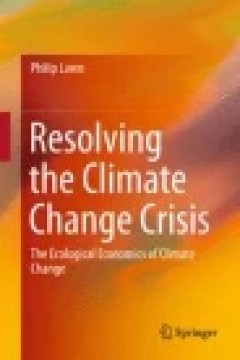
Resolving the Climate Change Crisis
This book explains why the climate change crisis is a symptom of a much larger underlying problem – namely, humankind’s predilection with continuous GDP-growth. Given this starting point, the world’s high-income nations must begin the transition to a qualitatively-improving steady-state economy and low-income nations must follow suit at some stage over the next 20-40 years. Unless they do…
- Edition
- Ed. 1
- ISBN/ISSN
- 978-94-017-7502-1
- Collation
- -
- Series Title
- -
- Call Number
- -

Regional Science Matters: Studies Dedicated to Walter Isard
This volume is a collection of fresh and novel contributions to regional science. They commemorate the scientific inheritance of the founding father of regional science, the late Walter Isard. All papers are written by well-known scholars in the field and serve to highlight the great importance of regional science theory and methodology for a better understanding of current spatial and environm…
- Edition
- -
- ISBN/ISSN
- -
- Collation
- -
- Series Title
- -
- Call Number
- -
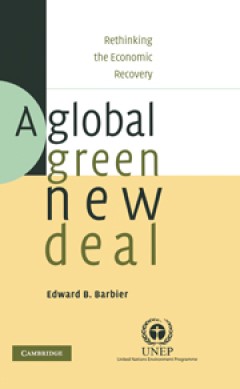
A Global Green New Deal Rethinking the Economic Recovery
Meeting the short run challenges of reviving the worldwide economy need not mean sacrificing long run economic and environmental sustainability. A Global Green New Deal (GGND) is an economic policy strategy for ensuring a more economically and environmentally sustainable world economic recovery. Reviving growth and creating jobs should be essential objectives. But policies should also aim to re…
- Edition
- -
- ISBN/ISSN
- 9780511844607
- Collation
- -
- Series Title
- -
- Call Number
- -
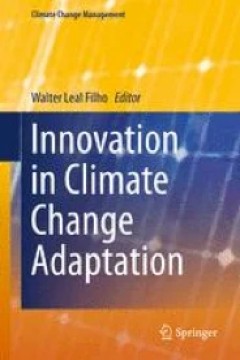
Innovation in Climate Change Adaptation
This book introduces innovative approaches to pursue climate change adaptation and to support the long-term implementation of climate change policies. Offering new case studies and data, as well as projects and initiatives implemented across the globe, the contributors present new tools, approaches and methods to pursue and facilitate innovation in climate change adaptation.
- Edition
- -
- ISBN/ISSN
- 978-3-319-25812-6
- Collation
- IX, 388
- Series Title
- -
- Call Number
- 330 INN
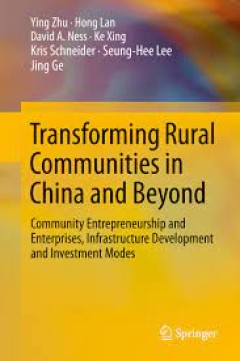
Transforming Rural Communities in China and Beyond Community Entrepreneurshi…
This book represents one of the first attempts by a multidisciplinary research team, encompassing the social sciences, business, architecture and planning, engineering, and finance and economics, to help rural communities discover sustainable and self-reliant paths to development and transformation. The opening chapter outlines the background of the research, its importance in the context of…
- Edition
- -
- ISBN/ISSN
- 978-3-319-11319-7
- Collation
- -
- Series Title
- -
- Call Number
- -

The Anthropocene and the Global Environmental Crisis Rethinking modernity in…
The Anthropocene, in which humankind has become a geological force, is a major scientific proposal; but it also means that the conceptions of the natural and social worlds on which sociology, political science, history, law, economics and philosophy rest are called into question. The Anthropocene and the Global Environmental Crisis captures some of the radical new thinking prompted by the arriv…
- Edition
- -
- ISBN/ISSN
- 9781317589099
- Collation
- -
- Series Title
- -
- Call Number
- -

Towards Global Sustainability Issues, New Indicators and Economic Policy
This study develops a new indicator for national and global sustainability. The main components of the EIIW-vita indicator are: the share of renewable energy, the genuine savings rate and the relative "green export" position of the respective countries; it is in line with OECD requirements on composite indicators. As green exports are related to technological progress and environmental-friendly…
- Edition
- -
- ISBN/ISSN
- 978-3-319-18666-5
- Collation
- -
- Series Title
- -
- Call Number
- -

Toward Well-Oiled Relations? China’s Presence in the Middle East following…
With China replacing the United States as the world's leading energy user and net oil importer, its relations with the Middle East is becoming a major issue with global implications. Horesh and his contributors set out to analyse the implications of China's growing presence in the Middle East.
- Edition
- -
- ISBN/ISSN
- 978-1-137-53979-3
- Collation
- -
- Series Title
- -
- Call Number
- -
 Computer Science, Information & General Works
Computer Science, Information & General Works  Philosophy & Psychology
Philosophy & Psychology  Religion
Religion  Social Sciences
Social Sciences  Language
Language  Pure Science
Pure Science  Applied Sciences
Applied Sciences  Art & Recreation
Art & Recreation  Literature
Literature  History & Geography
History & Geography